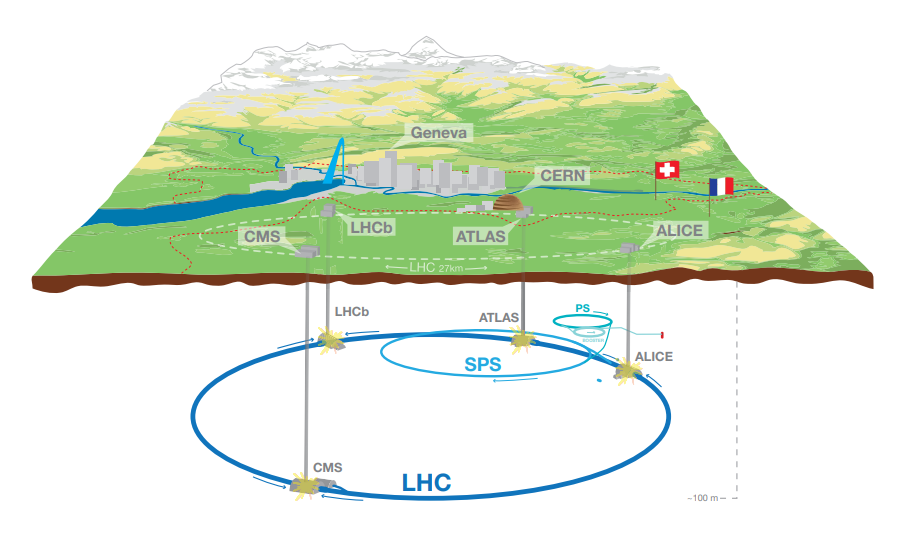At the forefront of modern physics, CERN, the European Organization for Nuclear Research, conducts groundbreaking research that fundamentally alters our understanding of the universe. However, the remarkable experiments and advancements that emerge from this scientific behemoth do not arise in a vacuum; they are the product of diverse engineering disciplines working in unison. So, which types of engineering do we find at CERN? This inquiry invites us to ponder not just the various specializations, but also the intricate challenges engineers face in one of the most sophisticated laboratories on the planet.
The first domain that comes to mind is mechanical engineering. Mechanical engineers at CERN design, construct, and test a myriad of components and systems, ranging from the colossal detectors that capture subatomic particles to the intricate cooling and vacuum systems needed for their experiments. These engineers employ advanced materials and innovative design principles to ensure the resilience and functionality of devices under extreme conditions. They are also charged with addressing the challenges imposed by the harsh operational environments typical of high-energy physics experiments, where temperatures may plummet to near absolute zero or oscillate wildly during experiments. The dynamic nature of particle acceleration and collision poses unique mechanical challenges, pushing these engineers to the limits of design and craftsmanship.
The domain of electrical engineering is equally prominent within the CERN ecosystem. Engineers specializing in electricity and electronics create circuits and devices that are pivotal for data acquisition, signal processing, and control systems. High-precision instruments must be developed to monitor particle trajectories and radiate the myriad signals generated in experiments. Additionally, the interlinked array of electromagnetic components—responsible for steering and focusing particle beams—necessitates a deep understanding of both theoretical physics and practical engineering methodologies. As technology evolves, electrical engineers are constantly faced with the challenge of integrating cutting-edge innovations, such as advanced superconductors and state-of-the-art computing systems, into existing infrastructures.
Software engineering plays a vital role at CERN, marked by the burgeoning need for robust data management and analysis systems. Detecting the subtle interactions among particles generates vast amounts of data that must be efficiently processed and analyzed. Engineers in this domain create complex algorithms and utilize machine learning techniques to dredge through terabytes of information, aiming to identify the rare events that may unlock new physics. The overwhelming scale and complexity of data present an ongoing challenge: how to optimize software solutions that can scale in responsiveness without sacrificing accuracy. Collaborative and interdisciplinary teamwork is essential, as software engineers join forces with physicists to bridge the gap between raw data and theoretical insights.
Another significant area at CERN is civil engineering, where engineers design the infrastructure necessary to accommodate the vast experimental apparatus and support facilities. This includes the construction of tunnels for the Large Hadron Collider (LHC) and other installations, where underground constraints and geological considerations add an extra layer of complexity. Civil engineers must tackle challenges related to seismic stability, structural integrity, and environmental impact, ensuring that these monumental structures can withstand both natural forces and human-induced conditions. Their expertise helps to guarantee that the facilities sustain operations over decades while being adaptable to future advancements in technology.
Industrial engineering steps in to optimize the myriad processes necessary for CERN’s complex operations. The effectiveness of particle physics research is contingent on seamless logistics and supply chain management, from procuring high-tech materials to assembling intricate devices. Industrial engineers deploy systematic approaches to enhance efficiency, reduce waste, and streamline operations. The task is far from straightforward, particularly when faced with non-standard components and unpredictable project timelines. They must track progress across diverse teams and integrate multiple engineering disciplines to achieve project milestones.
Instrumentation engineering is paramount at CERN, providing the tools necessary to probe the tiniest constituents of matter. Instrumentation engineers develop specialized sensors and measurement systems that can function under the extreme conditions characteristic of particle collisions. Challenges in this domain involve ensuring that these systems are sensitive enough to detect faint signals while also being robust against the cacophony of high-energy collision events. Here, innovation is crucial, as engineers must continually refine their designs to create devices that can push the boundaries of what is measurable in particle physics.
Finally, cryogenic engineering emerges as a unique specialization essential for CERN’s operations. Many experiments, particularly those related to superconducting magnets used in the LHC, rely on achieving ultralow temperatures. Cryogenic engineers design systems that effectively cool components to near absolute zero, employing complex insulation and refrigeration techniques to maintain these conditions. The challenge lies not only in the technological aspects but also in ensuring the safety and efficiency of such systems, where any miscalculation could have catastrophic effects on both equipment and ongoing experiments.
In conclusion, CERN is a microcosm showcasing a plethora of engineering disciplines that converge to facilitate the exploration of fundamental questions regarding our universe. From mechanical and electrical engineering to software and cryogenic engineering, each discipline faces its challenges, driven by the ambition of uncovering the mysteries of existence. The interplay among these diverse fields exemplifies the collaborative spirit crucial for navigating the complex and often unpredictable frontiers of modern science. As we venture further into the depths of knowledge, one cannot help but marvel at the intricate tapestry woven by engineers at CERN, full of potential yet fraught with formidable challenges.












